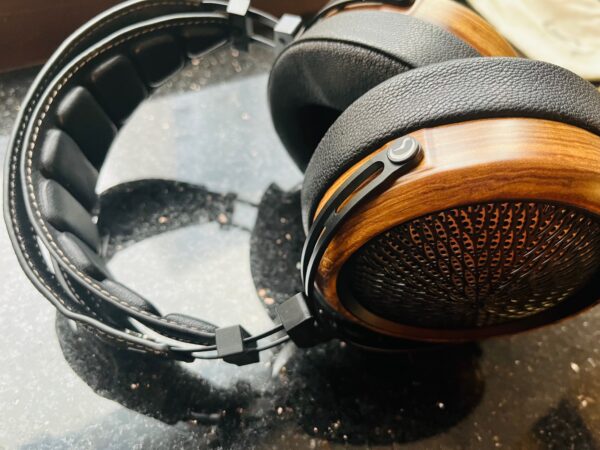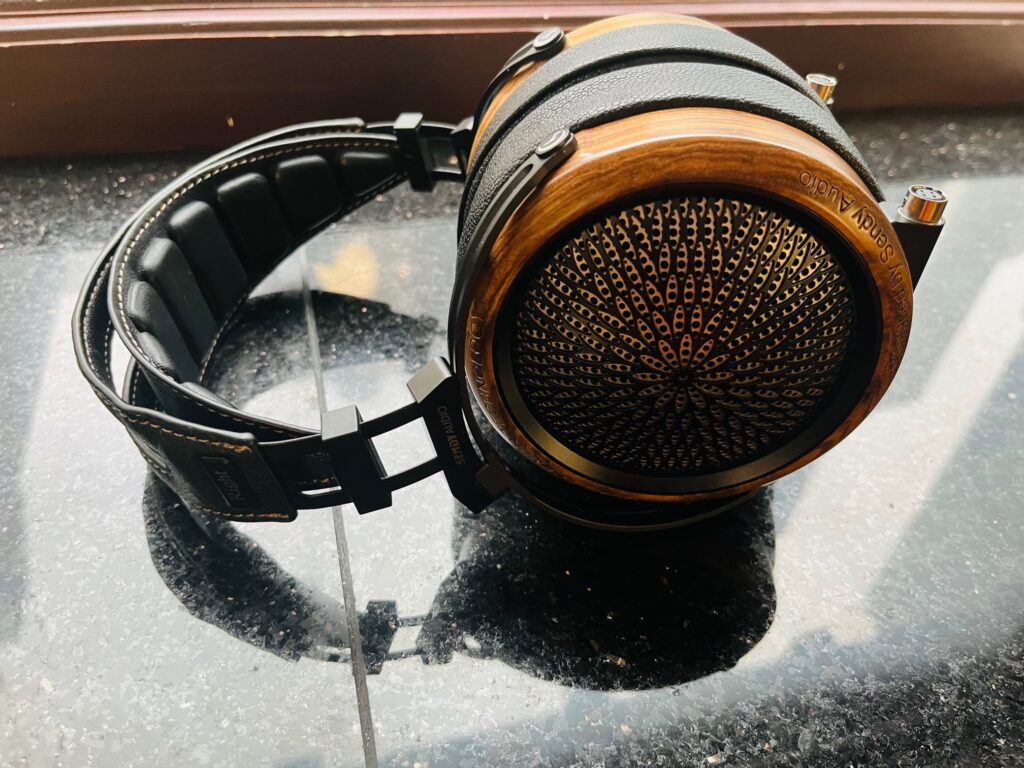Sendy Audio is the parent company to the popular SIVGA brand, which has become popular amongst audiophiles for for producing high quality sound at an affordable price. But Sendy produces a higher caliber and more expensive line of headphones, such as the Peacock, which is their flagship headphone. What kind of sound can you expect from these planar magnetic cans? And does the performance warrant the relatively high price tag?
In the Box
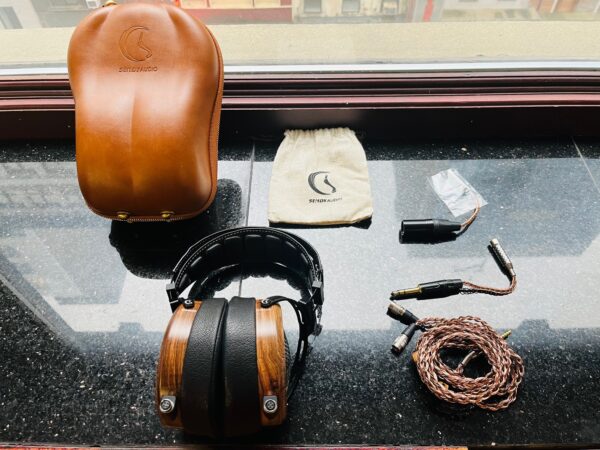
Look and Feel
The Peacock is a weighty headphone, but once on the head, the suspension headband lightens the load. Both, the memory foam ear pads and headband are made of a soft and smoothish goat skin. When wearing the Peacock, there seems to be a little gap between the back of the head and the ear pad. So there may be some leakage. But this didn’t negatively effect the sound. The metal components on the ear cup are made from machined aluminum, with a finished wood that sits around the circumference of the grill. All in all, it’s aesthetically pleasing and solid looking set of cans, as long as you don’t mind the hefty build.
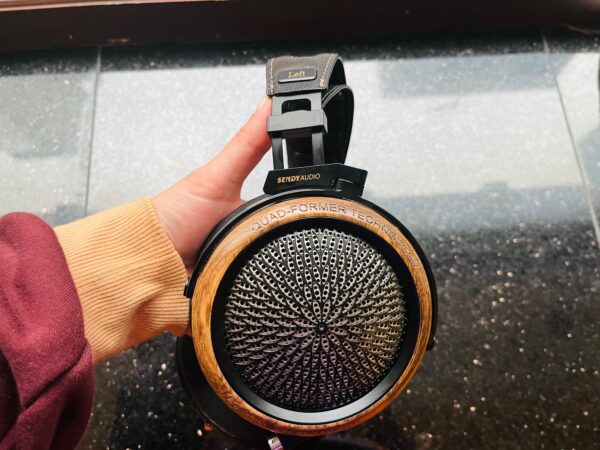
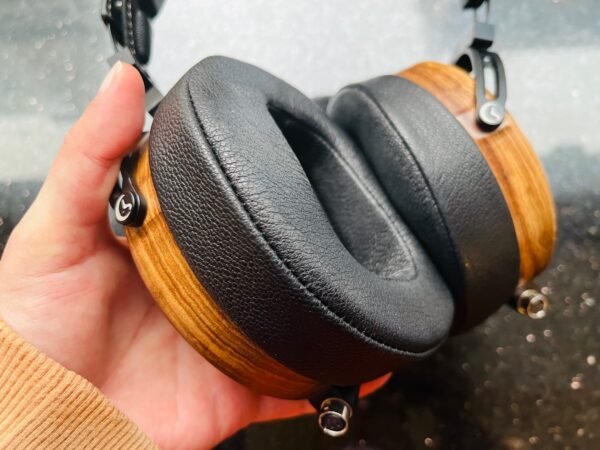
Design
The Peacock employs an 88mm planar magnetic driver and a composite diaphragm that is designed to create a warm and natural sound profile. Snedy had also tried to optimize brightness and minimize harshness in the highs by creating an “ultra-thin and high rigidity base material.”
The Peacock comes with an 8-core 6N OCC braided balanced cable. The connector on the headphone side is an XLR 4 pin, so it can easily be upgraded. The cable has a 4.4mm termination. But you’ll also find a 6.35mm adapter, as well as an XLR 4 included in the box.
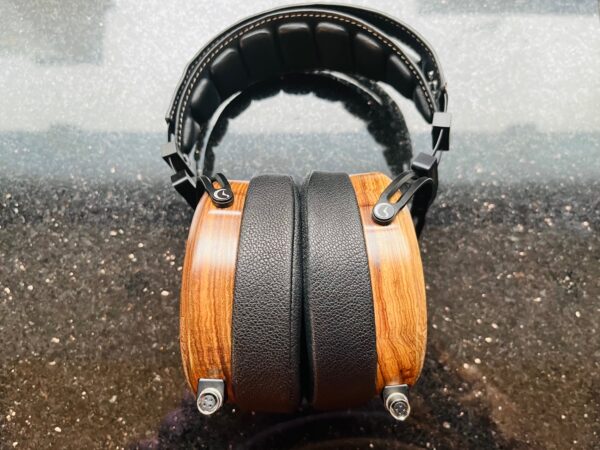
At 50 Ohms, I found the Peacock relatively easy to drive. A small desktop amp or portable DAC/Amp should give you sufficient power
Sound Impressions
Soundstage
The soundstage is probably the Peacock’s greatest quality. There’s plenty of scale across the stereo field. There’s also tons of depth here, and you’ll feel the imaging go way behind the ears. In sparse mixes, you can really feel the accuracy in placement, though this quality is somewhat diminished by the slightly crowded feel of the midrange. Still, in terms of depth and overall distance, the soundstage makes for a super fun listen.
Low-End
The bass is fast, punchy and not overdone. And in general, the low-end lends an energetic speed to pop and funk tracks. The sub frequencies give off the little rumble, but you won’t find your heart pumping wildly on hip-hop tracks. You’ll hear plenty of detail and texture when listening to string instruments in this range, and the tone and timbre feels natural, without any hint of saturation.
Mids
The midrange is one area that might disappoint more discerning audiophiles. The separation within instruments themselves is well defined, such as in low-mid acoustic guitars. However, there’s compactness or lack of clean layering in heavier mixes. I wouldn’t go as far as saying that the midrange is mushy, but there’s a slight blandness to the profile here, which is a shame given colorful imaging of the soundstage. So, if the resolution was a touch better in this range, these cans would be 100% killer. The balance in the mids is also relatively even, which probably doesn’t help the Peacock’s shortcoming with respect to definition in this range. That being said, it’s an easy and full bodied listen in the mids. So, nothing offensive here. Just a little short on skill.
Highs
The lower-treble protrudes through the mix in this range. So, listening to jazz, for example, saxophones in the low highs really jump out in front of the mix. This effect is less apparent with vocals, but the boost can sometimes feel slightly grating, depending on the genre of music. That being said, the highest peaks don’t reach piercing levels. So, interestingly, the highest frequencies are easier on the ears than the lower half of this range. Still, this idiosyncrasy sometimes helps to liven up the soundstage, offering a surprising pop to the treble in an otherwise rolled off high end. An again, listening to acoustic instruments in the highs, the timbre feels uncontrived and impressively nuanced in its resolve.
Summary
Let’s start with the good. A fun and impressively deep soundstage. Great speed and detail in the lows. An unadulterated tone with respect to acoustic instruments throughout the frequency spectrum. Yes, the Peacock certainly has talent and spunk in many respects. That being said, the midrange sometimes lacks clean definition in tracks with heavy instrumentation, dulling the overall sound profile. So, this juxtaposition between liveliness and dimness makes for a rather eccentric headphone. And unfortunately, the Peacock’s flaws can at times diminish from its great strengths, which makes this model’s steep price tag something to consider. But these shortcomings aside, the Peacock is a very entertaining listen, and one well worth a demo, especially if you listen to a lot of pop, funk and other genres with sparse mixes.
You can buy the Sendy Audio Peacock at Audio 46.
Specifications
| Sendy Audio Peacock | |
| Transducer | Planar Magnetic |
| Transducer Size | 88 mm |
| Frequency Response | 20Hz – 40KHz |
| Sensitivity | 103dB |
| Imdpedance | 50 Ohms |
| Cable Length | 2 m |
| Connector | 4.4 mm balanced |
| Weight | 578 g |
